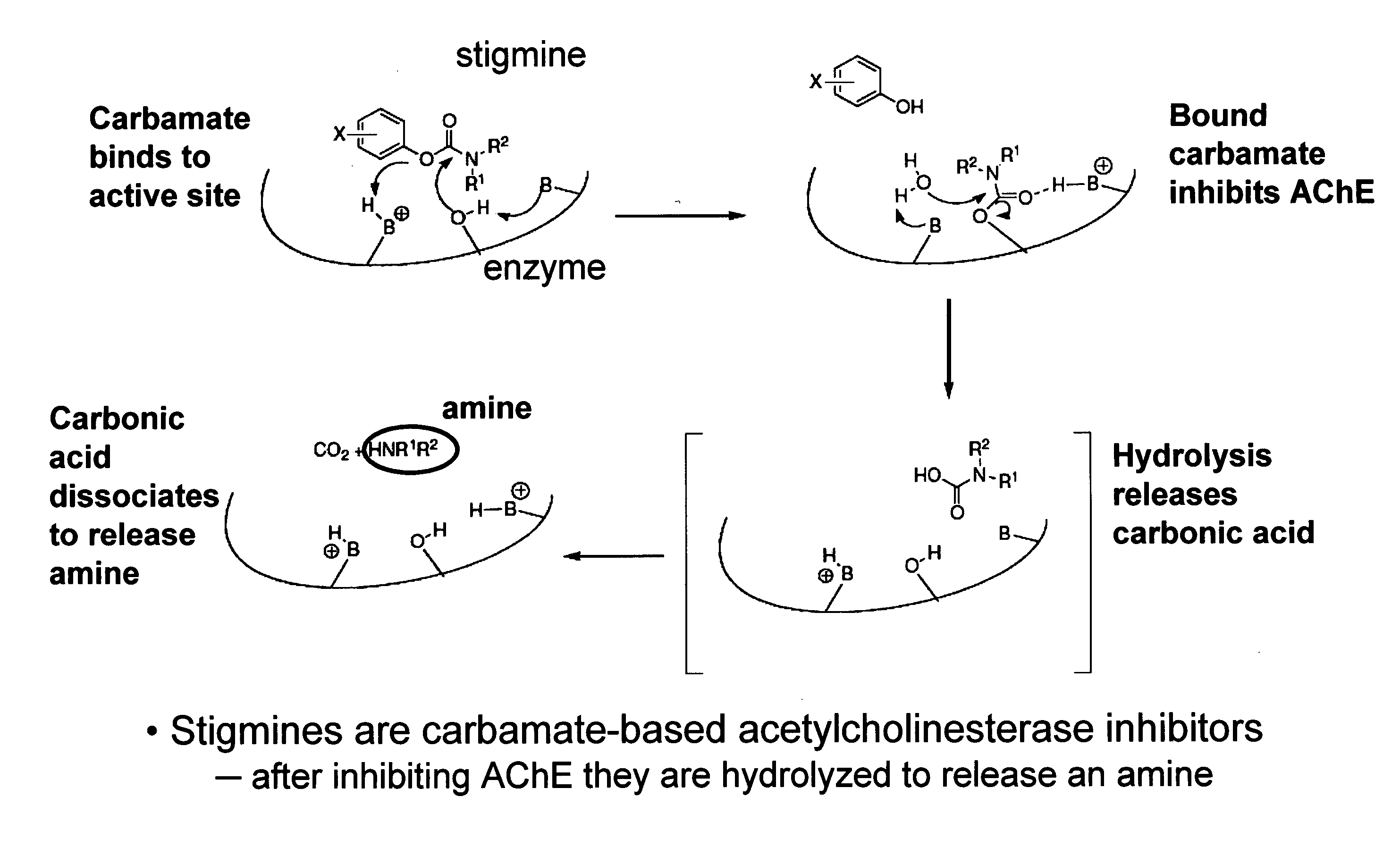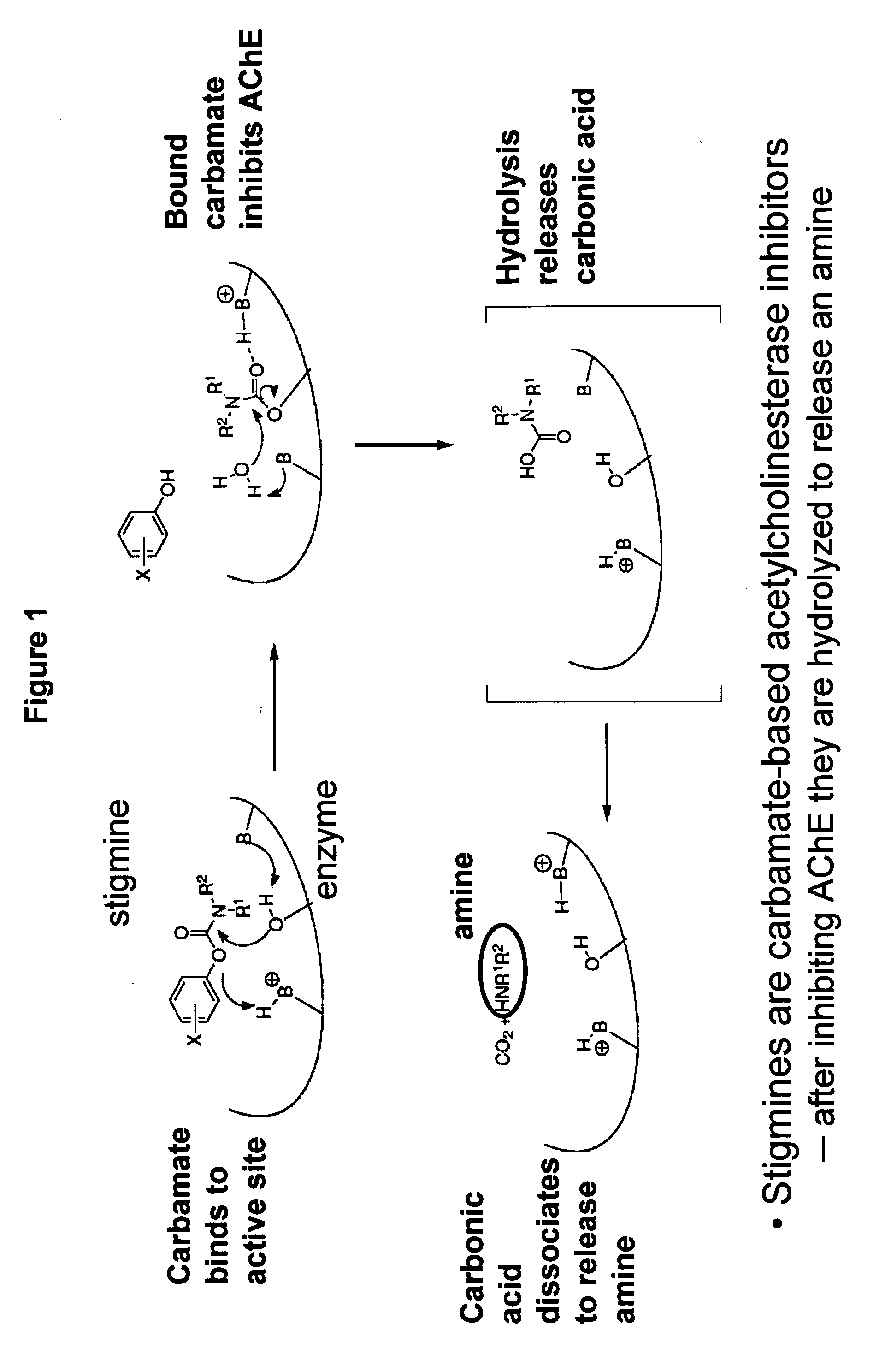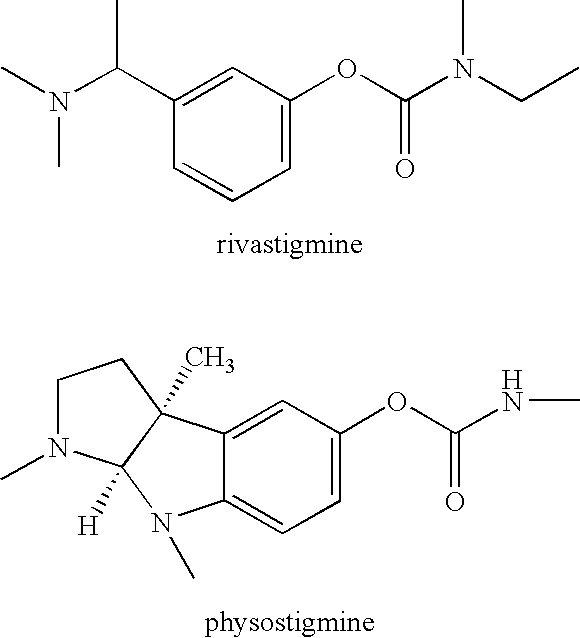Compounds that inhibit cholinesterase
a technology of compound and cholinesterase, which is applied in the field of compound that inhibits cholinesterase, can solve the problems of insufficient synthesis, release or re-uptake of cell signal molecule(s), drug delivery with a long-lasting effect, and clinical management strategies and currently available drugs are often associated with adverse side effects, so as to enhance cognitive function and enhance cholinergic function in the brain
- Summary
- Abstract
- Description
- Claims
- Application Information
AI Technical Summary
Benefits of technology
Problems solved by technology
Method used
Image
Examples
example 1
Compound Synthesis
[0483]Compounds of the invention are produced by coupling of Ra-phenol and Q-H using methods known to those skilled in the art. For example,
wherein Ra represents the appropriate phenyl substituents for a stigmine, such as rivastigmine or physostigmine, and Q represents an amine-containing pharmacologically active agent. For example,
[0484]Exemplary compounds are shown in Table A.
TABLE AStarting materialReagents / conditionsResultsDesipramine (300Desipramine is treated with sodium4 (240 mg, 52% yield, >95% bymg, 1.0 mmol)bicarbonate and riva carbamateHPLC.) isolated by columnQ = Pimidazole solution (2.0 mmol, 2.0chromatography.R1 = CH3eq.) in dichloromethane (8 mL).FluvoxamineFluvoxamine is treated with sodium8 (10 mg, 8% yield, 90% puritymaleate (100 mg,bicarbonate and riva carbamateby HPLC) isolated by0.23 mmol)imidazole solution (0.66 mmol, 3.0preparative TLC.Q = Seq.) in dichloromethane (7 mL).R1 = HFluoxetineFluoxetine is treated with7 isolated by preparative TLC ...
example 2
Preparation of Hydrochloride Salts
Example 2A
[0485]A compound of the invention is dissolved in chloroform (3 ml per mmol compound). A solution of 1M HCl in ether (1.5-2 molar equivalents) is added dropwise at 0° C. Upon completion of addition of hydrochloric acid, the mixture is allowed to warm to room temperature. Solvents are removed by evaporation and the residue dried under vacuum to yield the hydrochloride salt of the compound.
example 2b
[0486]A compound is dissolved in water and adjusted to a pH of ˜10 using 2.0 M aq. solution of Na2CO3. The compound is then extracted with dichloromethane (2×30 mL), dried (Na2SO4) and concentrated. The residue is passed through a silica column using heptanes (74%), ethyl acetate (25%) and triethylamine (1%) as the solvent. The fractions are evaporated using a rotovap and dried under high vacuum overnight. The residue is taken up in water (6 μL), followed by the addition of 2.0 M HCl (3 mL). The solution is then lyophilized to give the compound as its HCl salt.
PUM
| Property | Measurement | Unit |
|---|---|---|
| temperature | aaaaa | aaaaa |
| diameter | aaaaa | aaaaa |
| diameter | aaaaa | aaaaa |
Abstract
Description
Claims
Application Information
 Login to View More
Login to View More - R&D
- Intellectual Property
- Life Sciences
- Materials
- Tech Scout
- Unparalleled Data Quality
- Higher Quality Content
- 60% Fewer Hallucinations
Browse by: Latest US Patents, China's latest patents, Technical Efficacy Thesaurus, Application Domain, Technology Topic, Popular Technical Reports.
© 2025 PatSnap. All rights reserved.Legal|Privacy policy|Modern Slavery Act Transparency Statement|Sitemap|About US| Contact US: help@patsnap.com



